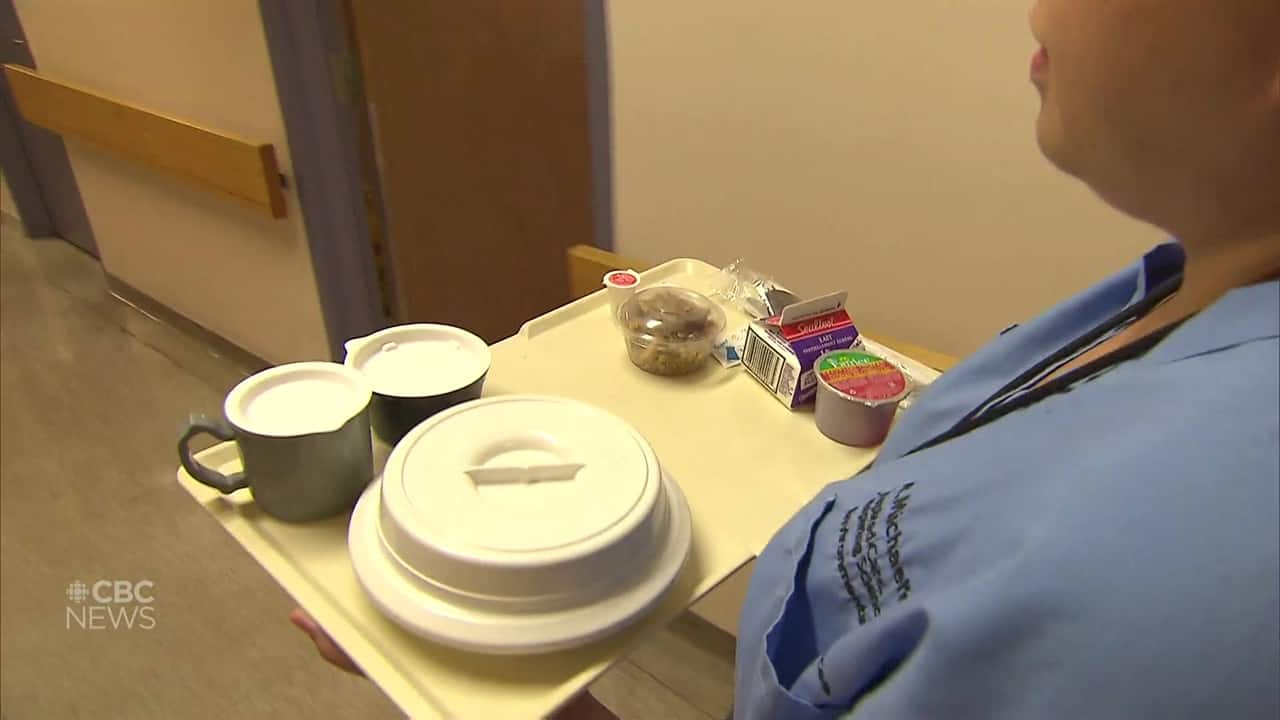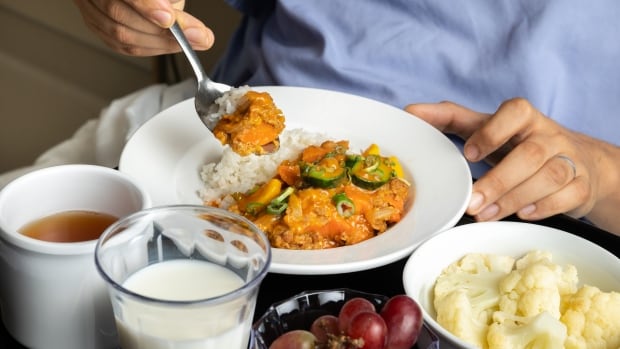
The Current24:02Top chef says hospital food can be tasty — and healing
You might be familiar with some of the less-than-appetizing meals that get served in hospital if you, or a loved one, has ever had an extended stay.
But a recent pilot project at a Vancouver hospital aimed to replace unappealing mush with something that’s both appetizing and nutritious.
“There’s starting to be more recognition of the role that food plays in recovery,” said Dr. Annie Lalande, a surgery resident at Vancouver General Hospital.
“It’s such an important part of healing. It’s such an important part of the patient experience,” she told The Current‘s Matt Galloway.
Vancouver General Hospital partnered with celebrity chef and TV personality Ned Bell to offer more than 20 new menu items in an effort to encourage more hospital patients to eat.
Called the Planetary Health Menu Pilot Project, Bell dove into this “important” work when the opportunity presented itself.
“I think the power of food is something that we need to harness in health care,” he told Galloway. “I sort of think of it as food care. That sort of is one of the arms of the octopus of health care before it then turns into sick care.”
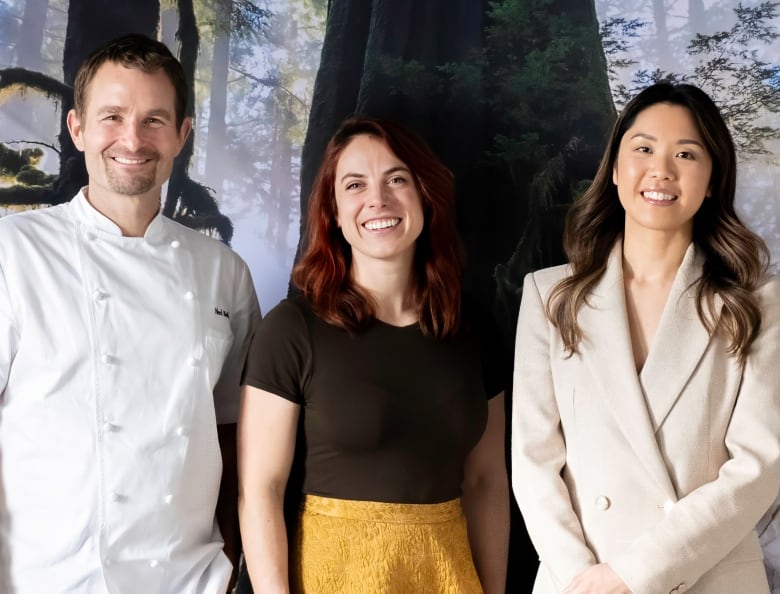
The pilot ended in March and ran for six months. An in-depth analysis is underway to identify which menu changes had the greatest impact on patient satisfaction, as well as quantify the reduction of greenhouse gas emissions during the project.
Lalande, who co-leads the project, says the patients she spoke with were generally pleased with the options that were served.
“We’ve had patients telling us that they were looking forward to the meals, that they noticed the difference, that they thought the new flavours were exciting … and overall that this improved their experience,” she said.
A relative of a man recently hospitalized in Winnipeg says patients are being served unappetizing meals, and he questions whether they meet the nutritional needs of people recovering from illness or injury.
Encouraging eating
The main goal of the project was to encourage more patients to eat the food being served to them.
“A lot of our patients weren’t eating a lot,” Lalande said.
“If you don’t have much of an appetite, and the food doesn’t speak to you, then you don’t tend to eat as much, and that certainly has impacts on recovery.”
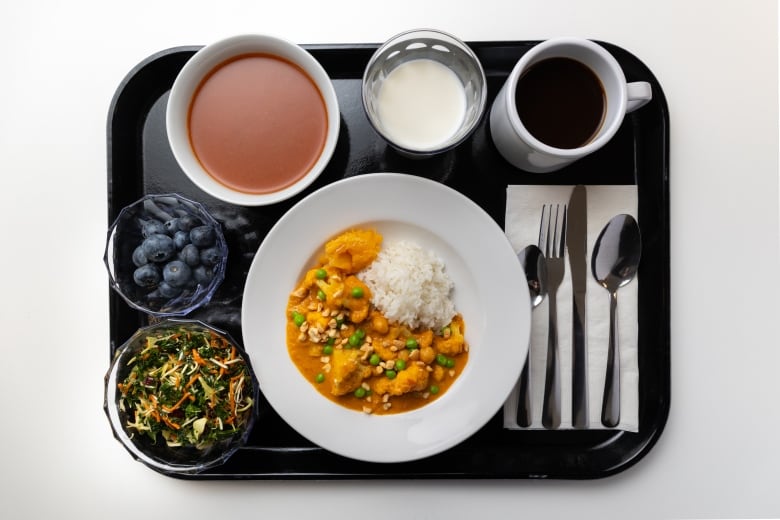
Bell saw this first hand when his wife was a cancer patient in 2019. He was disappointed — both as a chef and as her caregiver — to feed her some of the meals she was given.
“It left a lot to be desired, whether visually or generally … do I want to eat this, because I’m not feeling great,” he said.
Chef Joshna Maharaj, who wasn’t involved in the Vancouver pilot but has done similar work since 2011, calls the average hospital dish a “dismal scenario all around.”
“We just thaw things out and then sometimes attempt to prop that food up with cornstarch slurry, just to add some texture,” she told Galloway.
She said the food is usually unappetizing and unhealthy.
“There were times where I would look at this whole tray of not-awesome food and say, ‘We’d be better off giving patients 250 milligrams of chicken broth and an apple rather than this whole parade of food that is not doing the job,'” she said.
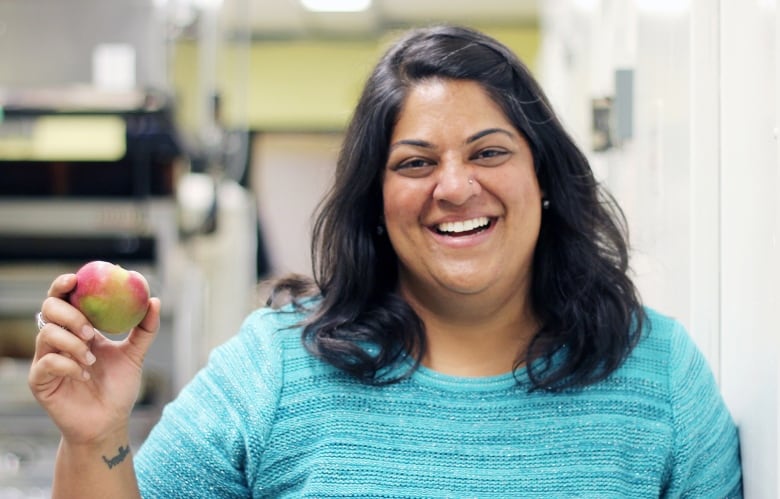
But getting patients to eat wasn’t as simple as replacing the food with a gourmet meal. Lalande says the pilot’s menu had to find a balance between taste and nutrition to suit hospital patients at varying stages of health.
That includes patients who might be feeling nauseous or are recovering from surgery and can’t stomach a flavourful meal.
“On the other end of the spectrum, you’re trying to feed people or provide food for people who have recovered … and might be feeling up for a more adventurous meal,” Leland said.
They also wanted to inspire how people looked at food once they’re discharged from the hospital.
“If we can inspire people to cook new dishes, to try new things and to take that with them when they go home, that’s one way that we can really try to improve the health of our communities in general,” she said.
Choice of cuisine
There were complexities beyond food to chew on, including cost and a lack of labour, said Bell.
When building the menu, Bell said the recipes had to be functional. They also had to be executed efficiently with the dozens of hospital kitchen staff and equipment already on hand.
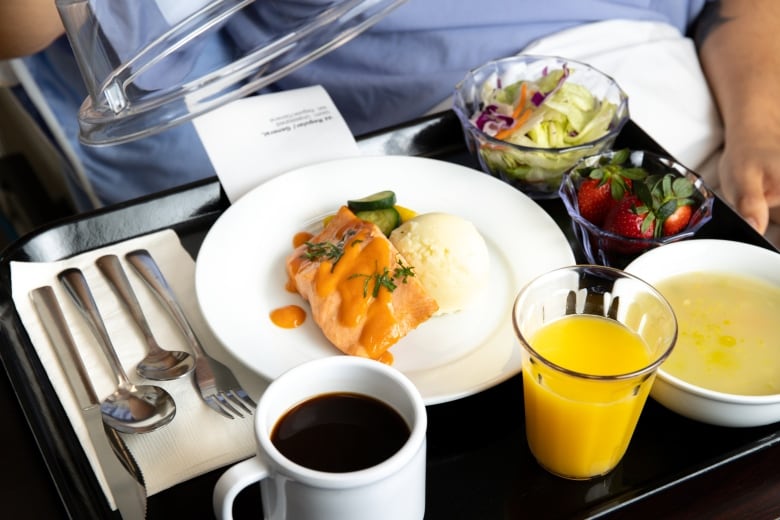
“They’re not restaurant chefs.… The equipment is not modern,” he said.
“Also the equipment is significantly large. You know, cooking pasta for 900 [people] at the same time is really difficult to do well, and we did our best.”
Some of the team’s top recipes included roasted steelhead trout with tomato miso vinaigrette, as well as experimentations with old classics, such as sloppy joes and turkey bolognese.
They also offered plant-based options and dishes from other cultures, such as South Asian-inspired coconut curry, a Thai noodle bowl and Korean gochujang.
Lalande said it was important to give patients a diverse array of meals over the six-month pilot, as opposed to one specific option each mealtime.
“Food only matters and only counts if it’s eaten. So it’s important that we provide food that patients want to eat that meets their needs — [not] only from a purely nutritional standpoint, but from a cultural perspective,” she said.
